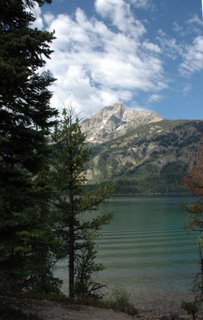One of the nice features of digital photography is that the sensor is capable of infrared imaging. Much of it is filtered out by the sensor, but there is enough sensitivity that, with the proper filter, you can take some pretty stunning images.
For these, I used a Nikon D-70 with 18-70mm zoom lense with a Hoya R72 filter. This filter passes only wavelengths above 720 nanometers, which is at the far edge of visibility to human eyes. A tripod was necessary, since the exposures can run up to 5 or more seconds, depending on your aperture. Since infrared focuses at a different point than the visible spectrum, I shot at f/22 to increase depth of field. I processed the raw image with Nikon Capture Editor, saved it as a jpeg, and edited it in Photoshop CS, where I desaturated the remaining red coloration, then resaved it as a smaller jpeg for uploading to the blog.
Blue skies generally render as quite dark, with clouds tending toward their natural color. Deciduous leaves are nearly white and pine needles are lighter than normal, but not as white as, say, aspen leaves. Water tends to be fairly dark.
For those who remember B&W photography and filters, using a red filter would achieve a similar effect with darkening the sky, but leaves and pine needles would be darkened as well. Infrared imaging operates differently and is used in aerial photography to study patterns of disease and stress in forests and cropland.




No comments:
Post a Comment